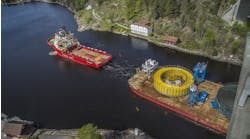MetaCarta's geOdrive is an automated, IT-based method to fuse text and geographic data. It is installed as a dedicated server on a company's network as a Linux appliance. This eases the integration process significantly, the company says.
MetaCarta geOdrive uses natural language processing to read text documents and extracts geographic references. Then, it quickly sifts through millions of research reports, text documents, Intranet pages, and public Web content. Within seconds, MetaCarta geOdrive presents search results as icons on a map. Users click on the stacks of documents to read the first few lines of text or click on embedded links to read the full document. Users can further narrow their searches by zooming in to specific geographic locations and modifying the text search.
Geoparsing is what makes documents aware of the locations they reference. MetaCarta geOdrive is able to geoparse documents at the rate of 50/sec.
MetaCarta's geoparsing technology analyzes documents in three steps:
- It uses natural language processing to identify text within a document that could refer to geographic locations
- It assigns geographic coordinates and confidence values to potential locations as defined by MetaCarta's proprietary gazetteer and algorithms
- It indexes the geographic coordinates to make the document searchable.
Identifying references to locations requires a good gazetteer, which is an index of names and locations. For oil and gas users, MetaCarta has expanded its gazetteer to include publicly available industry-specific names and locations. These include administrative areas, such as blocks and leases within the Gulf of Mexico and North Sea, and worldwide oil and gas fields and sedimentary basins. In addition, MetaCarta can extend its gazetteer with internal proprietary names and locations, such as wells and study areas, to ensure maximum effectiveness of searches within a given company.




